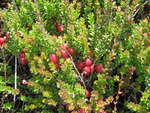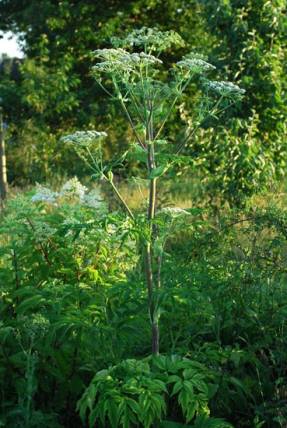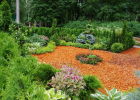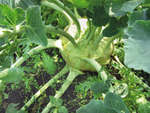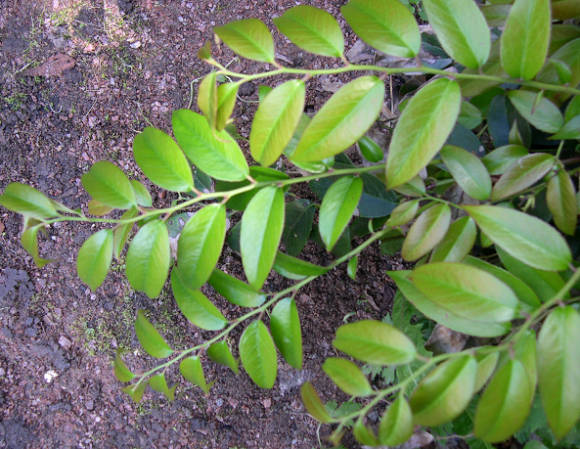 The development of the culture of Japanese irises in the Central region of Russia is still an unresolved task. The main efforts on this difficult and, we admit, fraught with many disappointments path have been and are being made by amateur flower growers.
The development of the culture of Japanese irises in the Central region of Russia is still an unresolved task. The main efforts on this difficult and, we admit, fraught with many disappointments path have been and are being made by amateur flower growers.
Japanese irises are the name used in relation to varieties of xiphoid iris (Iris ensata). At home, in Japan, these beloved and revered plants are called "hana-shobu". A characteristic feature of Japanese irises is the unfolding of the perianth lobes in one horizontal plane.
The peduncle of the classic Japanese hana-shobu bears a single flower with downward perianth lobes of lilac, purple, white. It is such an iris, which we sometimes arrogantly consider outdated and unattractive, is sung by Japanese art, becomes for the Japanese a source of meditation and poetic inspiration. Modern trends in the development of hana-shobu culture are focused on breeding large, soaring, corrugated double (double), having six outer perianth lobes or multi-petal (multi-petal) flowers. Above the wide-spread "plates" of modern varietal irises, short crests (styles) and additional petals-petals rise, which often have a bizarre shape and form a spectacular composition in the center of the flower, a kind of crown crowning this whimsical work of nature and man.
All over the world, the work of hybridizers is primarily aimed at promoting Japanese irises to the north and at overcoming their calciophobia. The achievement of hybridizers, who managed to cross the "Japanese" with marsh iris, was the emergence of yellow-flowered varieties. The attractiveness of these delicate and sophisticated plants to the iris grower is enhanced by their flowering time. In the suburbs around the end of June - beginning of July, when the undisputed favorites of our gardens, tall, bearded irises, are in bloom, hana-shobu bloom. The timing and duration of their flowering may vary depending on weather conditions, however, three to four additional weeks of joyful communication with your favorite plants are provided to the grower.
The first serious attempts to "tame" the capricious "Japanese" in the Moscow region are associated with the name of the Moscow State University professor V.M. Nosilova. While practicing agrotechnical methods of working with the khana-shobu culture near Moscow, the florist made conclusions about the destructive influence on it of such factors as soil acidification (especially podzol with peat) and the presence of lime in the soil. Also in the suburbs he worked with the culture of khan-shobu V.T. Palvelev, who identified another negative factor - the destructive effect of too high concentrations of mineral salts.
The main factors that complicate the work with this crop are the lack of the annual sum of positive temperatures and special requirements for watering and soil composition (especially intolerance to calcium). In search of agrotechnical methods that would ensure stable growth and flowering of Hana-shobu, Russian iris growers tried different options: growing in containers that can be immersed in water during the growing season and flowering of plants, and transferred indoors for the winter; the use of "decorative greenhouses" to protect the khan-shobu plantings from cold winds.
In the collections of lovers of the Moscow region, hana-shobu are still a rarity. There are varieties bred in St. Petersburg by G. Rodionenko (Vasily Alferov, Altai, Dersu Uzala). They are distinguished by winter hardiness, as they are obtained by crossing varietal hana-shobu with xiphoid iris of the wild flora. Recently, varieties of Australian and American origin have been added to the varieties of foreign breeding previously found in the middle latitudes, such as Patrocle (France), Oyodo (Japan): Janet Hatchinson, Dural Peacock, Summer Storm, etc.The development of agrotechnical methods allowed amateurs near Moscow to increase the vitality of these sissies and make them bloom; however, as a rule, foreign varieties, next to Russian ones, look oppressed, bloom poorly, and often die. Varieties from the Far East, a significant part of which were bred by one of the leading Russian experts in the field of iris growing - L.N. Mironova (varieties Primorye, Rozovoe Cloud, Lilac Dymka, etc.), are distinguished by exceptional beauty. Unfortunately, even these natives of the warm, humid Primorye, although less capricious than foreign varieties, in the middle zone do not reach the same level of unpretentiousness combined with decorativeness, as in their native Far Eastern penates.
 Shelter for the winter, installation of tunnels over plantings in spring and autumn, careful adherence to the norms and terms of watering and fertilizing during the season help the plants get used to the conditions of the Moscow region. However, the most effective way of breeding new varieties, originally obtained and grown in the middle lane. Since 1997, a number of varieties of Japanese irises of domestic selection have been officially registered by Russian flower growers. Of course, the leaders in the introduction of new varieties of khana shobu in Russia are professionals who work with the culture of irises in botanical gardens - G.I. Rodionenko (St. Petersburg) and L.N. Mironov (Vladivostok). In the Moscow region, the first steps towards breeding varieties of "Japanese" near Moscow were taken by amateurs - at the turn of the new century, members of the "Flower growers of Moscow" club M.E. Kaulen and N.I. Khimina. Seedlings originating from the irises of Primorye (the initial seed material was provided by V.I.Naumenko) showed resistance in the conditions of our region and good decorative qualities. Introduced in 2000 by the author of these lines, the varieties Expectation and Autumn Sky (double, large, slightly corrugated) are distinguished by their elegance and have been blooming annually since 1998. This allows us to hope that after a few years, subject to persistent work on selection, selection of new seedlings and further improvement of agrotechnical methods, the problem of zoning Japanese irises in the Moscow region will be basically solved. We look forward to the entry into bloom of the next generations of "Japanese near Moscow", hoping for an increase in both resistance to the conditions of our region, and decorative qualities.
Shelter for the winter, installation of tunnels over plantings in spring and autumn, careful adherence to the norms and terms of watering and fertilizing during the season help the plants get used to the conditions of the Moscow region. However, the most effective way of breeding new varieties, originally obtained and grown in the middle lane. Since 1997, a number of varieties of Japanese irises of domestic selection have been officially registered by Russian flower growers. Of course, the leaders in the introduction of new varieties of khana shobu in Russia are professionals who work with the culture of irises in botanical gardens - G.I. Rodionenko (St. Petersburg) and L.N. Mironov (Vladivostok). In the Moscow region, the first steps towards breeding varieties of "Japanese" near Moscow were taken by amateurs - at the turn of the new century, members of the "Flower growers of Moscow" club M.E. Kaulen and N.I. Khimina. Seedlings originating from the irises of Primorye (the initial seed material was provided by V.I.Naumenko) showed resistance in the conditions of our region and good decorative qualities. Introduced in 2000 by the author of these lines, the varieties Expectation and Autumn Sky (double, large, slightly corrugated) are distinguished by their elegance and have been blooming annually since 1998. This allows us to hope that after a few years, subject to persistent work on selection, selection of new seedlings and further improvement of agrotechnical methods, the problem of zoning Japanese irises in the Moscow region will be basically solved. We look forward to the entry into bloom of the next generations of "Japanese near Moscow", hoping for an increase in both resistance to the conditions of our region, and decorative qualities.

